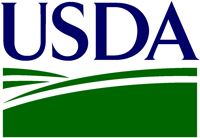 U.S. Wheat Associates (USW) farmer directors elected officers for the 2015/16 fiscal year at their board meeting in Washington, DC, Jan. 31, 2015. Mike Miller of Ritzville, WA, was elected to serve as Secretary-Treasurer. Current Vice Chairman Brian O’Toole of Crystal, ND, was elected Chairman and current Secretary-Treasurer Jason Scott of Stevensville, MD, was elected Vice Chairman. Current Chairman Roy Motter of Brawley, CA, will become Past Chairman. The new USW officers begin their one-year terms in July 2015 at the organization’s annual meeting in San Diego, CA.
U.S. Wheat Associates (USW) farmer directors elected officers for the 2015/16 fiscal year at their board meeting in Washington, DC, Jan. 31, 2015. Mike Miller of Ritzville, WA, was elected to serve as Secretary-Treasurer. Current Vice Chairman Brian O’Toole of Crystal, ND, was elected Chairman and current Secretary-Treasurer Jason Scott of Stevensville, MD, was elected Vice Chairman. Current Chairman Roy Motter of Brawley, CA, will become Past Chairman. The new USW officers begin their one-year terms in July 2015 at the organization’s annual meeting in San Diego, CA.
Mike Miller is a fourth generation farmer who operates a dryland wheat farm and grows multiple crops on a separate, irrigated farm in east central Washington. He has served on many local, state and national boards, and is in his second term on the Washington Grain Commission and his fourth year as a USW director representing Washington.
Brian O’Toole is an experienced agricultural and community leader. He serves on the North Dakota Wheat Commission, on the board of the Wheat Marketing Center in Portland, OR, and is Chairman of SBARE Wheat Granting Committee. He is also past president of the North Dakota Crop Improvement and Seed Association and past president of Crystal Farmers Elevator Co-op.
Jason Scott is at least a sixth-generation wheat farmer from the Eastern Shore of Maryland, where he manages his family’s soft red winter wheat, row crop and vegetable operation. He also owns and operates a Pioneer Hi-Bred® seed dealership with his father. Scott has been a member of the Maryland Grain Producers Utilization Board since 2003 and served as president from 2005 to 2007.
Roy Motter is managing partner of Spruce Farms, LLC, a diverse operation in California’s Imperial Valley that produces Desert Durum®, lettuce, cabbage, onions, sugar beets, sugar cane, alfalfa seed and hay, sudan grass, melons and tomatoes. He has been a member of the California Wheat Commission since 1998.










